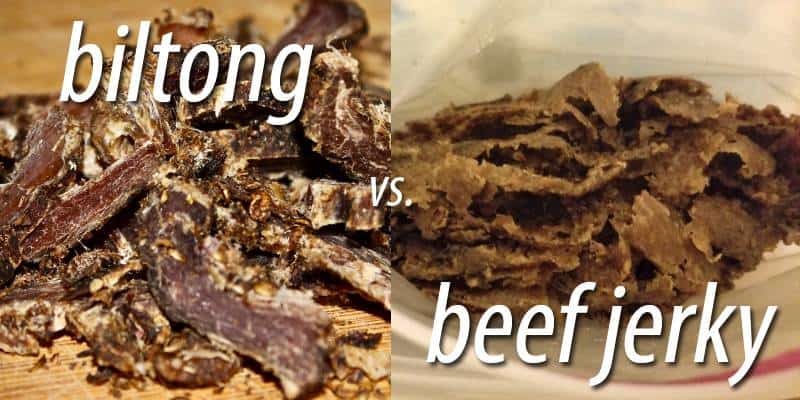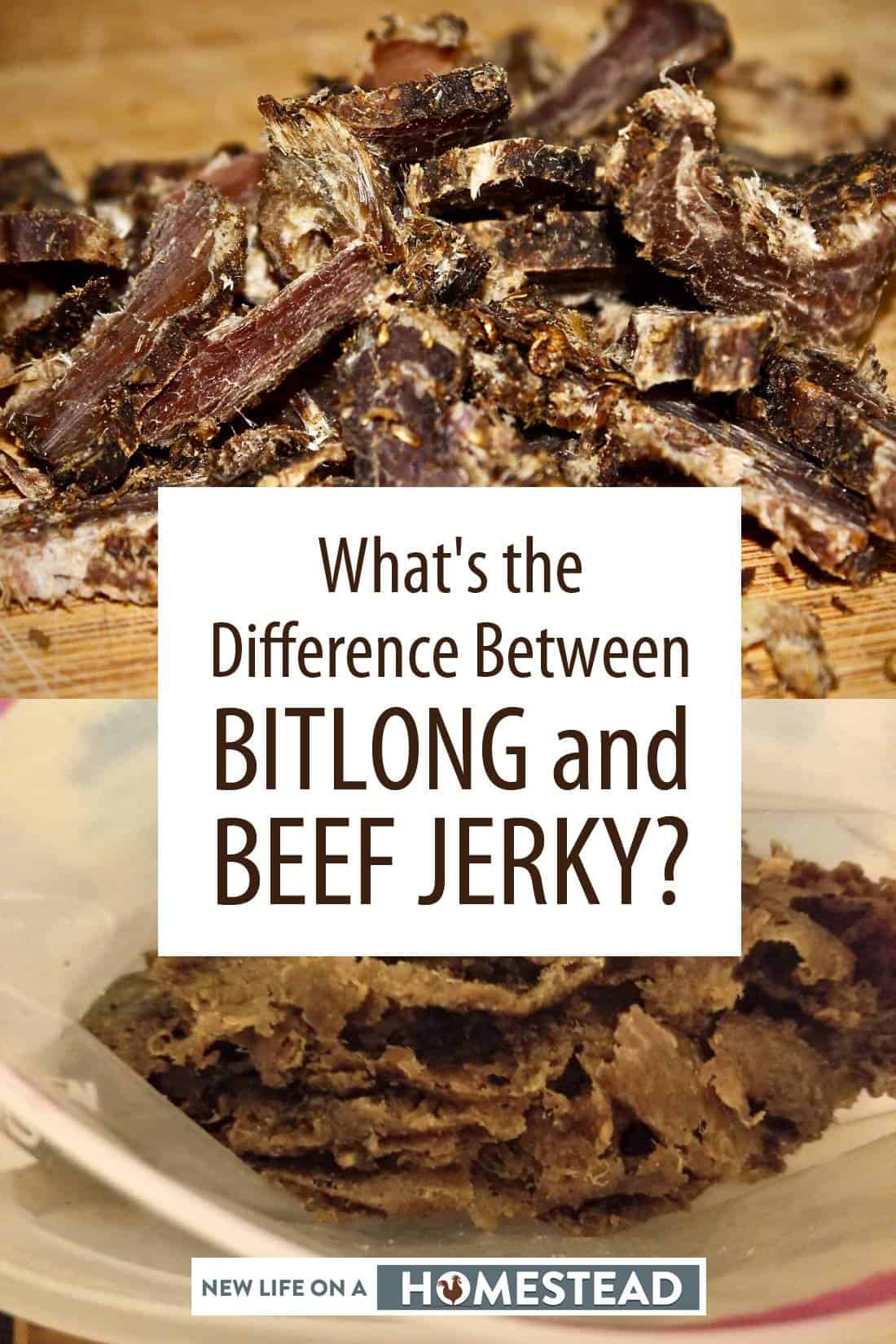I’ve always liked biltong, it’s one of South Africa’s favorite snacks; it’s easy to get as most butchers have it in stock and it equally easy to make. I’ve made some myself many times, and it’s one of my favorite foods to make.
Now, beef jerky is the American equivalent, and many people think they’re one and the same. They’re not exactly wrong, but they’re not exactly right, either.

So, what’s the difference between biltong and beef jerky? What’s the difference between biltong and beef jerky? Biltong is marinated and cured for 24 hours, then hung up to air-dry for a week. It’s high in protein, and relies on the beef cut’s natural flavor and a bit of spice. There’s also a wider variety in terms of the cuts used. Beef jerky is marinated in several spices and sauces before being immediately dehydrated. In comparison to biltong’s natural meat flavor, beef jerky has a very smokey taste to it. Beef jerky is also tougher than biltong because it has less fat.
| Feature | Biltong | Beef Jerky |
|---|---|---|
| Origin | South Africa | Americas |
| Process | Marinated and cured for 24 hours, then air-dried for 1 week | Marinated, then dehydrated |
| Flavor | Meaty flavor | Smokey taste |
| Softer to chew | Tougher to chew | |
| Meat type | Beef, kudu, eland | Beef (but jerky can be made from venison, lamb, pork etc.) |
Biltong
Biltong is a South African snack that’s made by taking pieces beef and curing and marinating it in a mix of vinegar and spices – usually for around 24 hours – before hanging the meat up to air dry. The meat takes about a week or so to dry and then you’re left with thick, richly flavored meaty goodness.
The low sugar and water content makes biltong high in protein. Biltong’s reliance on natural flavor and spices makes it healthier than beef jerky which has high salt and sugar levels.
Biltong can have a variety of flavors and textures depending on the beef cut that you’ve used. Leaner cuts will be drier whereas a cut with a bit more fat in it will be softer and chewier. The flavoring depends on the salt / spice mix used, but the curing process does add a little bit of a tang to the meaty flavor.
Beef Jerky
Coming from America, beef jerky also relies on beef as a primary ingredient but has a variety of flavors – each with different sauces and/or flavors containing high levels of sugar and salt.
There’s no curing involved with beef jerky. The beef cuts are usually leaner, and are usually marinated in spices and sauces before being dehydrated.
Beef jerky is sliced very thinly and cooked on a rack at a low temperature to dehydrate the meat slowly. This process gives beef jerky a sort of smokey taste in contrast to the more natural meat flavor of its South African counterpart. The texture of jerky is also much tougher due to how little fat is in the meat, giving it steak-like consistency.
Similar but not quite the same
So, to recap:
- Biltong is higher in protein and than beef jerky, but has more fat.
- The preparation methods are different with biltong being marinated, cured, and left to air dry while beef jerky is marinated and then dehydrated on a rack on a low temperature.
- Beef jerky has a very tough, steak-like texture because there’s little fat in it while biltong has a variety of textures depending on the cuts used.
- Biltong is South African and beef jerky is American.
- Jerky is cut thinly before dehydrating and biltong is left in thicker pieces to be cut later.
Well, that’s it; that’s the difference between biltong and beef jerky. I hope you guys found this article informative and that it helps you get a good snack. As always, thanks so much for reading and I’ll catch you in the next one!
Take care and happy snacking!


Greg is a South African farmer and homesteader who’s been around animals ever since he can remember. He’s also an avid camper and hiker.
